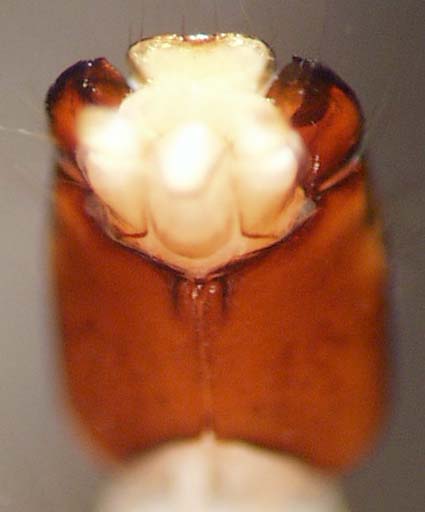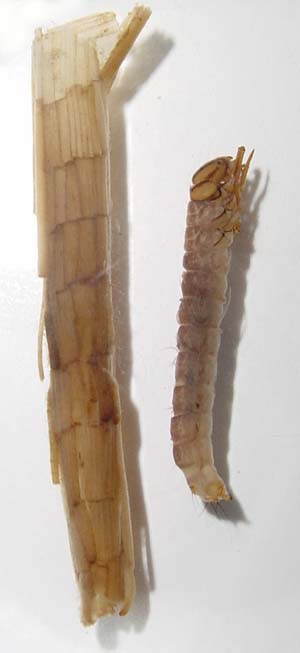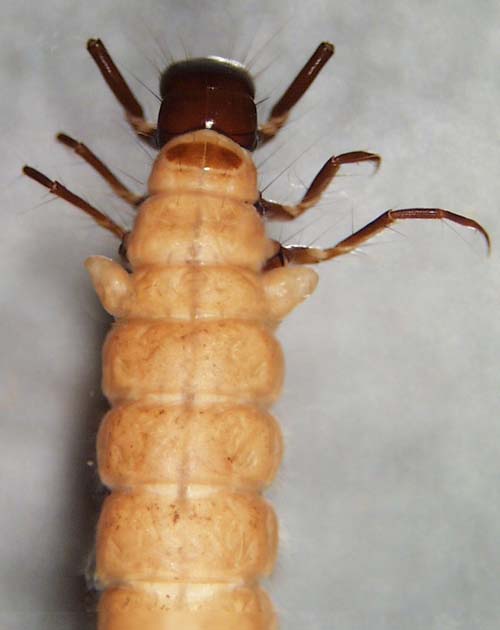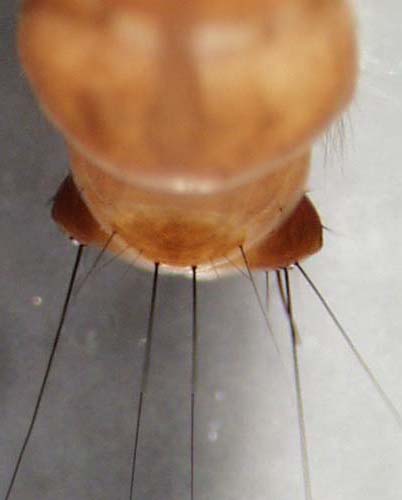
THE XERCES SOCIETY FOR INVERTEBRATE CONSERVATION Aquatic Invertebrates in Pacific Northwest Freshwater Wetlands |
| Identify taxa |
Phryganeidae (giant case makers) |
|
Giant case makers typically live in ponds, lakes, or wetlands in the vegetation along the edges. The cases from which this family takes its name may be up to 2" long, and are long tubes made from rectangular pieces of vegetation, often glued together in a spiral. Members of this family are very agile and less reliant on their cases than most case-maker caddisflies. They tend to leave their cases quickly when captured or threatened, but are also much more adept than other cased caddisflies at climbing back into their cases. The Phryganeidae are unique among caddisflies because their abdominal segments are well defined and the metanotum does not have sclerites on top. The larva usually have a clear light/dark striped pattern on their head. Phryganeidae also have a prosternal horn, dorsal and lateral humps on the first abdominal segment, and a plate on top of the ninth abdominal segment. Genera found in still waters of the Pacific Northwest include Agrypnia, Banksiola, and Phryganea. |
Size: xlarge |
      |
|
© 2007 Xerces Society
Contact info@xerces.org





